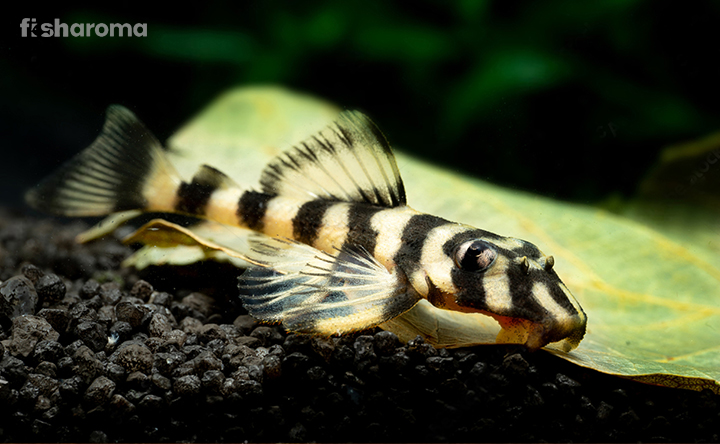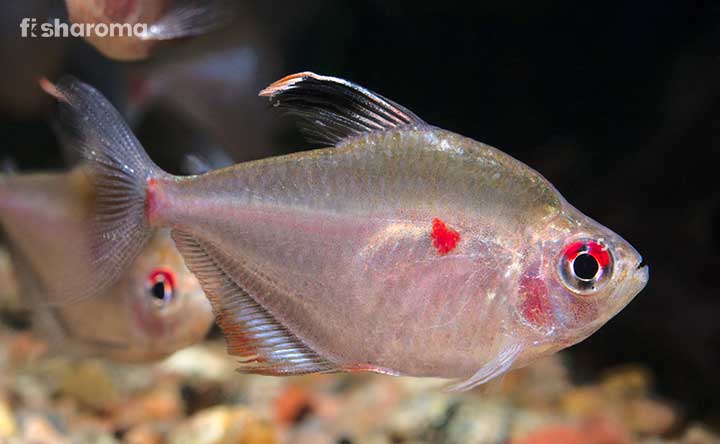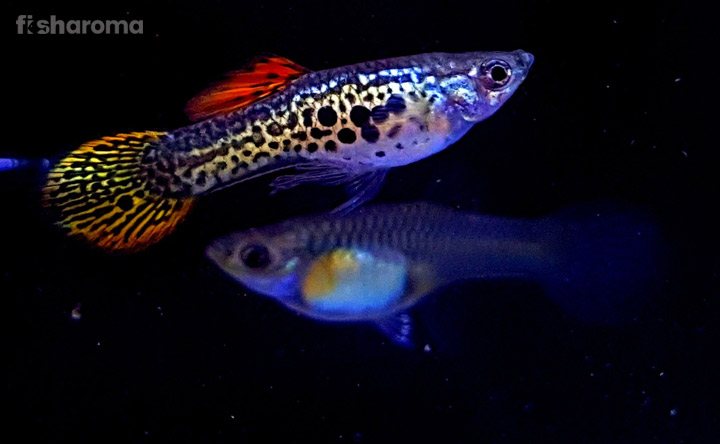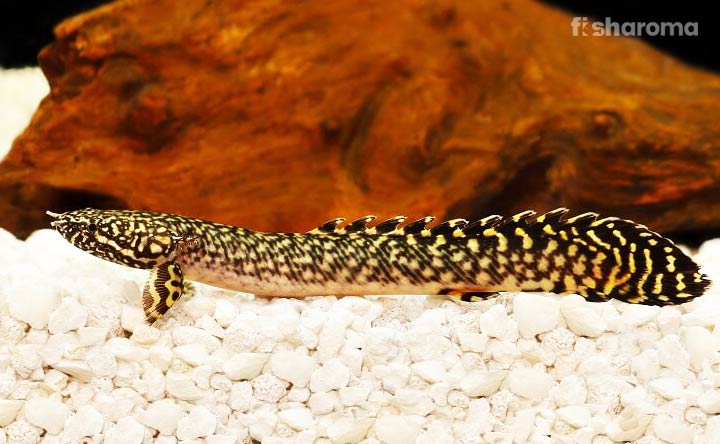Ryukin Goldfish: Caring Guide For The Fancy Goldie
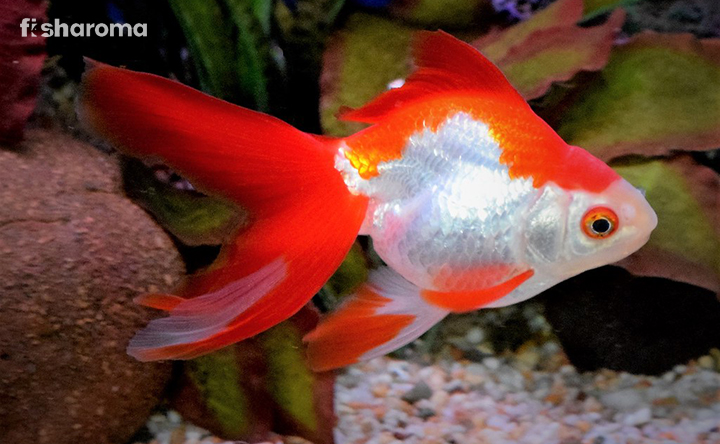
Ryukin Goldfishes are essentially bred for show purposes, and they don’t have any natural or feral population in the wild. The captive-bred species is sometimes considered to be a version of Fantail Goldfish because they have similar appearances. Taking care of them is easy, and their body colours, behaviours, and activities will mirror how well the owner is taking care of them. Though considered to be an ideal option for beginners, all aquarists can easily handle the gentle but playful fish.
In order to make the fish thrive you need to provide an ideal situation, but what is the structure of that “ideal” setting? We will share the knowledge elaborately, but first, you need to read the following structure to know everything in a more comprehensive way.
Key Specifications of Ryukin Goldfish
| Also Known As | Nagasaki Goldfish |
| Origin | Asia |
| Lifespan | 10-15 years |
| Colours | Orange, red, white, and black (all have different versions) |
| Temperament | Gentle |
| Size | 6-10 inches |
| Diet | Omnivorous |
| Reproduction | Egg-laying |
| Maintenance Requirements | Easy |
| Tank Size | 20-30 gallons |
Overview
Being a Cyprinidae family member, the Ryukin Goldfish is a small to medium-sized fish with a wonderful conduct. There are various shades exhibited on such fishes and based on that they have multiple variations. We will name them in the appearance section, in due time. They are as peaceful as their other Goldfish cousins. The Asian origin of the fishes refers to their historical breeding story. Their breeding rate is quite good and they can easily survive for a long time, accompanying you in a jovial way of their own.
Origin and Habitat of Ryukin Goldfish
Like all Goldfishes, these ones owe their origin in China, where captive carps were bred and after a prolonged breeding phase, Goldfishes were born. When it comes to this particular version of the Goldfish, it has originated in Japan, more precisely in the Ryukyu Islands. You can probably understand that the name of the place has a major influence on naming the species.
Observing the family type and the origin of the fishes, it is determined that Ryukin Goldfish is a freshwater species.
Appearance of Ryukin Goldfish
The appearance of the fish is similar to its cousin Fantail Goldfish. With a typical hump, short body, and egg-shaped appearance, they look graceful with the double-finned feature. They usually have a short tail and it has four lobes, but the length of the tail differs in some of the fishes. Based on the tail shape, there are some fishes known as Ribbon-Tail Ryukins or Fringe-Tail Ryukins.
Their tails are actually of three types, either broad, long or single. Such variations are made based on their fin length as well, and they are known as Long-Finned Ryukins and Short-Finned Ryukins. The scale on the fish body is metallic in nature.
The profuse breeding affects the size and colour of the fishes, but compulsorily in a positive way, leading to a plethora of variations.
Size
An average Ryukin Goldfish can reach a size of 6 inches. However, there are some exceptions, and growing to be 8 or 10 inches is not that uncommon. Some of the fishes have an extremely high hump, they are called High Back Ryukin.
Colour
The fish used to be only reddish-orange in shade, but it shows many other shades too. Based on their colours and mutations, we are enlisting them in the following
- Sakura Ryukin Goldfish – The base colour is golden, with tinges of white, orange, and black all over the body. This variation has some awesome flowing fins, that give the impression of gliding.
- Red Ryukin Goldfish – The red-capped fish has long fins and it shows some black and white markings on the red body.
- Black Ryukin Goldfish – This fish has a black body, with some white patterns.
- Calico Ryukin Goldfish – Calico Goldfishes have multiple shades like chocolate, red, white, and tri-colour on their triangle-shaped body.
Behaviour of Ryukin Goldfish
The Ryukin Goldfish looks breathtaking while moving across the tank. While most of their cousins find it somewhat difficult to move freely because of their stout bodies, this one is an exception. These fishes easily roam around and they swim quite fast.
The otherwise gentle fishes, somehow have a superior complex only when they are kept with other species, who usually swim comparatively slower than them. Ryukin Goldfishes chase and bully (maybe a strong word) the slow-moving fishes and that’s why they are sometimes tagged as semi-aggressive.
These fishes are scavengers as well, and they won’t mind finding food from every possible nook and corner of the tank. They are super active and quite competitive in that sense.
Lifespan of Ryukin Goldfish
These Goldfishes are blessed with a long lifespan of around 10 years. Although, that is dependent on your care factor as well. While keeping them in a spacious tank and proper nutrition intake can lengthen their average lifespan, poor quality of water and food can do the reverse. Some of the Goldfishes can even live for 15-20 years with all the proper conditions maintained simultaneously.
Diet of Ryukin Goldfish
Ryukin Goldfish has hidden a glutton inside it because it just loves to eat whatever is around. If you think that makes your feeding duty easy, then you are wrong, because while you have plenty of options, balancing them can be tricky.
As far as the feeding time is concerned, you can only feed the fish twice, and not more than that. We recommend that you keep the feeding timing the same every day. Meaning if you are giving food around 11:00 am in the morning, every day you should follow this timing only. This will regulate their biological timing and prevent the overfeeding nature.
As much as these Goldfishes love to consume, sadly, their sensitive digestive can’t accept everything they chew and eat. So, make sure that you give them foods that will nurture them without upsetting the intestinal system. Pellets and dry foods are the must-haves, so are the live foods. For frozen foods, you need to thaw them without before feeding your pet fish.
Following are the foods that you should include in your Goldfish’s diet
- Brine Shrimps
- Daphnia
- Earthworm
- Bloodworm
- Seaweed
- Oranges
- Broccoli
- Cooked Peas
- Lettuce
- Apple
- Algae Pill
- Cucumber
They love to consume plants as well, but if you give live plants then try not to provide lots of it, because when the lights are off at night, the plants will use up the oxygen level from the water.
You can never give bread, uncooked peas, cooked lettuce, and any sort of food that can contain animal fat to your fish.
Tank Requirments of Ryukin Goldfish
Ryukin Goldfishes are susceptible to many adverse situations and they are genuinely affected, physically and mentally, if they don’t get their required surrounding. When it comes to Goldfish tanks, there is absolutely no way you can compromise with their size and sanitization. A fish needs a spacious aquarium so that it can swim without any hurdles. The tank should also be free from dust, dirt, and filth, as those can have a fatal impact on Goldfishes’ health.
Tank size
The Ryukin Goldfishes might not be a large species, but they need their own space. While a single fish can stay within a 10-gallon tank, we strongly recommend that you opt for bigger tanks from the beginning. At least 20-30 gallons of water tank is the best because the Goldfishes are best kept in groups. You need to give space to every fish in the tank.
Tank Lid
The lid is an important part of the tank as it creates a hindrance for all the outside objects that might get inside and contaminate the water.
Substrate
Since the fishes have a scavenging nature, you must keep the substrate full of soft gravel. As you don’t want these beautiful fishes to get hurt during their foraging. The rocks or pebbles at the bottom of the tank should be big enough so that these fishes can’t swallow them. Their inquisitive nature allows them to try and chew everything they come across.
Sand substrate is not recommended because these fishes can easily move them and as a result, you can see sand piling up in one corner of the tank. This will also cause a problem with the filtration properly.
Filter
These Goldfishes’ excessive bioload or waste could be a matter of concern if there is no proper filtration. The water should be cleaned all the time, and for that, you need a strong filter like a Canister or Hang on Back Filter that works excellently with two-fold filtration that is chemical and mechanical.
Ornaments
You can decorate the tank as much as you wish to do, but you can’t compromise with their swimming space. You can keep some driftwoods or some hiding spots for the fishes. If your Goldfish loves the decoration, they will definitely roam around them. Also, most of them will sleep near the beautiful decorative objects of the tank. You can go colourful and try something interesting decorations like castles, shipwrecks, and bridge models.
Lighting
Ryukin Goldfishes don’t bother about any particular type of lighting, but you should. You must install some lighting that will help you see the fish at night. There are some lid-specific lighting that you might opt for. The lighting doesn’t need to be strong or subdued, just the moderate will do.
Presence of Flora
Goldfishes love to eat live plants and so whenever they find anything like that, they will try to forage or uproot. So, keeping any plant inside the tank will not work as far as decoration is concerned. Still, you can opt for some epiphytes (a sort of plant) like Java Moss, Java Fern, Anubias, Salvinia, Crinum, and Azolla.
If you want to keep some silk or artificial plants then make sure those aren’t sharp because that can be detrimental for the ever-inquisitive fish.
Cleaning Methods
As we have previously discussed that these fishes have a lot of bioload, compared to their small size, a thorough cleaning is important. Only a strong filter won’t be enough and you need to change the water manually also.
You need to know that all the ornaments that you keep inside the tank, needs to be cleaned as well. Use a wipe or any cloth to clean the stones, pebbles and artificial decorating objects. Maintain this cleaning regime on a regular basis.
Using the aquarium salt can improve the fish to maintain its health, by strengthening the ion exchange and gill functions, along with an overall boosting of their immune system.
Water Type for Ryukin Goldfish
Ryukin Goldfishes stay in cold waters and that is the mandatory parameter you need to provide. The water should be plenty and clean so that the waste produced by the fish gets diluted but without degrading the water quality.
Temperature
The standard temperature range for a Ryukin Goldfish is 17.7-22.2 Degrees Celsius.
pH Level
Set your water pH level between 6.0-8.0. This can be termed as the neutral zone.
Hardness
The general hardness of the water should be 5-19 dGH.
Mineral Level
Ammonia, Nitrate, and Nitrite all should be 0 ppm. Slight fluctuation can be tolerated but not something havoc when it comes to these things.
Replacement Procedure of Water
The water change should be done weekly with 25% water only. Massive water change can lead to a sudden shock for the fish as they can’t withstand huge changes, that too all at once.
Compatibility of Ryukin Goldfish
Ryukin Goldfishes are somewhat choosy when it comes to their compatibility. While they can harass some slow-swimmer fish species, as you have already read previously, they leave no stone unturned to showcase their love for other desired species. While fishes with single fins are at risk to be housed with such Goldfishes, fishes who have dual fins are loved by the Ryukin Goldfishes.
Suitable Tank Mates
Your Goldfish would be happily thriving with some of the selective Goldfishes like
- Lionhead Goldfish
- Fantail Goldfish
- Oranda Goldfish
- Ranchu Goldfish
- Black Moore Goldfish
Unsuitable Tank Mates
Avoid other bigger fishes who are more aggressive towards the Goldfishes. Even some Goldfish species are not compatible with these pretty fishes. Species like the following are not ideal tank mates for your pet
- Telescope Eye or Bubble Eye Goldfishes
- Suckermouth Catfishes
- Cichlids (especially those who are bigger than the Ryukin)
- Chinese Algae Eater
- Red Tail Black Shark
Breeding of Ryukin Goldfish
Firstly creating a breeding tank with lots of fibrous plants is a must. The tank should be of at least 20-gallons where you can make your fishes breed in groups. The water temperature should be 15.5 Degrees Celsius around, which you need to lower by 3 Degrees each day. The male and female fishes need to stay separately prior to their mating time. During this time, you must ensure that they are getting a protein-enriched diet throughout.
During the spawning, female fishes become rounder than they usually are, as they are full of eggs. When the time comes, they will lay around 10,000 eggs and there is no parental care observed in any one of the breeding pair.
The eggs take almost 4-7 days to completely hatch and then you can see young fishes or “Fry” appear. You can feed them commercial “Fry” specific food on a regular basis for the initial days. When they are growing, they will gradually consume Brine shrimps and similar foods that an adult Ryukin would survive on.
Diseases of Ryukin Goldfish
Like any other Fancy Goldfishes, these fishes don’t have a reputation of being healthy. The reason is their weak digestive system, uncomfortable body structures, preventing an easy movement for the fish. They are not naturally occurring species, so just like any hybrid species they can be affected by diseases and succumb to them. Early detection can sometimes be life-saving and for that, you need to be more observant and careful.
Swim bladder diseases can cause constipation and it is entirely due to their irregular body structure that makes normal digestion difficult. This mostly happens if there is overfeeding involved, so you should be proper from your end when it comes to caring so that prevention of such ailments can be a possible task.
Other bacterial, fungal, or parasitic infections, including Ich, are common things for any Goldfishes. Your Ryukin is no exception to that either.
We recommend, better to prevent and prepare than to repent and repair, so if you can maintain a clean tank and proper diet, a lot of diseases can be curtailed.
Summary
Ryukin Goldfishes are beautiful species, with variations of colours and shapes. Despite their stout figure, they can manage to swim that will entertain you. They are usually content with their own groups but can extent their friendly fin for other tank mates if they are similar in shape and nature. From consuming both plants and meaty foods, their inquisitive nature makes them forage at the bottom of the tank. However, from an overall perspective, we can say they are ideal for new and experienced fish enthusiasts.
Other Similar Care Guides
We are pretty sure that you will love our other articles such as
- Pearlscale Goldfish – The pearl-like body will be good enough for your home tank. The orange and white combination is more visible when they are more playful.
- Cardinal Tetra – The fish is small yet comes in magnificent colours. The tropical fish is peaceful in nature.
- Phoenix Rasbora – The schooling fish is a scavenger by nature. It is mostly found in Southeastern Asia.


